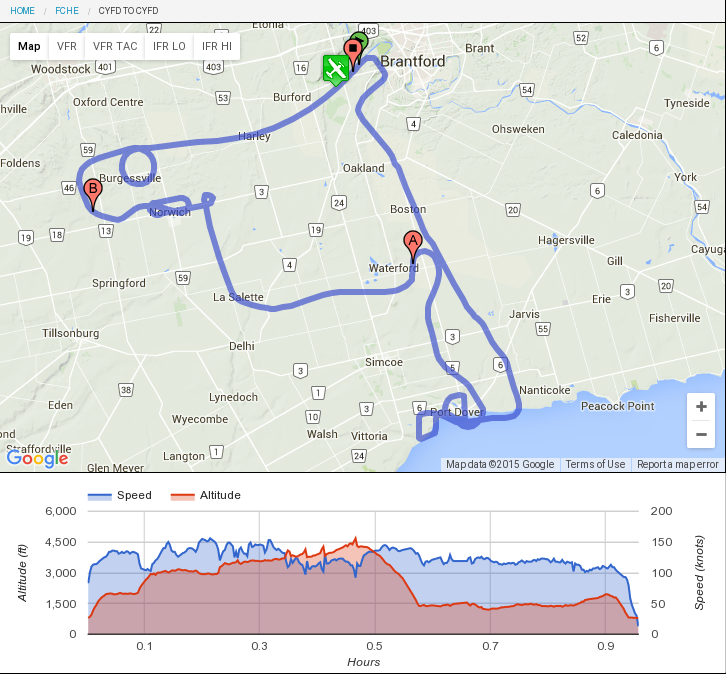As a part of our ongoing homeschooling experiment, the brats get a regular diet of physics education. (We're not quite at kinematic equations yet, but getting close.) Most recent was the standard weight-measured-by-spring-extension demonstration. We snagged some cute calibrated school-lab scales, and the boys measured this and that. They collected notes. They put things away.
OK, that's about all one can do on solid ground. It doesn't give people an intuition about the relationships between weight, mass, acceleration, or what we colloquially call "G forces". But what about not solid ground?
Yup, we went there. On a lovely quiet christmas day, we loaded up the Experimental Apparatus (a few scales and a few weights), the Experiential Experimenters (kids), into a mobile Controllable Acceleration Apparatus (airplane) and went for a ride.

The task assignments were as follows:
| Frank | driver |
| Juimiin | note taker |
| Eric | quantitative (weight/spring) operator |
| Stuart | qualitative (random object) operator |
At various points during the flight, the quantitative aspect of the experiment consisted of Eric calling out the readings on his scale. The indicated rest weight was 2.0N, so to convert to Gs, we simply divided the indicated Newtons by 2. We did not record deflection angle for the spring/weight. That means we only have acceleration magnitudes, not directions ... but see below.
First up, getting far and high enough to play. During takeoff, one experiences mainly lateral (forward) acceleration, which a deflected spring is enough to measure. At peak power, apprx. 1.2G were recorded. Random straight & level turbulence showed itself as 0.7-1.2G. When initiating a rapid climb, a pulse of 1.5G was felt mostly upward.
Next up, a sequence of turns. Why turns? Because we can induce sustained G forces by choosing a bank angle at a fixed speed/altitude, and pulling / turning along with the centrifugal. The sustained G force makes it easy to read a steady figure off of the spring scale. We did four turns at different bank angles, with a bit of recovery time in between. Because of the attitude indicator plus other indicators, we could get reasonably accurate figures:
| gentle "standard rate" turn, 18° bank | 1.2G |
| 30° bank turn | 1.3G |
| 45° bank turn | 1.5G |
| 60° bank turn | 2.0G |
Next up, less-than-1G manoeuvres. We could not create a very controlled sustained environment for these, since we are not allowed to turn the airplane upside down and didn't think to do weird banked-outside pitch-inward kinds of turns. So we just pitched up then pushed over, kind of like the vomit comet. Lacking good instrumentation, we flew by the seat of our pants. And what pants they were! Let me tell you, some kinds of cotton are so comfortable! And with smooth underpants .... no wait, never mind.
Anyway, we ended up doing four dives. Each one only gave us a few seconds of perceived reduced-weight. Eric reported the springs going to or near zero every time. I tried to extend the time, and got Stuart to monitor whether loose objects placed in the cabin would float. Sure enough, they did. The little one squealed with a crazy delight during and long after each repetition: "again!" was heard again and again. Eric reported a loose object not floating from his hand, which was a small mystery. Was gravity distorted around his seat only? The real answer was even better, and became obvious when he complained of hitting his head on the cabin ceiling. Think about it for a second.
OK, time's up. The brat undid his seat belt some time ago without telling us. Every time we did a dive, he became a loose object. Of course things did not float away from his hand: he himself was already floating!
Seat belts re-secured and re-checked, security briefing re-emphasized so maybe Transport Canada won't come after my certificate, we did some pleasant circles around Port Dover and drove home. After all the science earlier, it felt anticlimactic, but still plenty nice. We got some good data, and experienced controlled forces outside one a normal ground-dweller's range.
Sadly, we took no video this time, nor did we collect detailed acceleration telemetry from the cell phones aboard. But we can relive the trip anyway: see this google map or this naviator map.